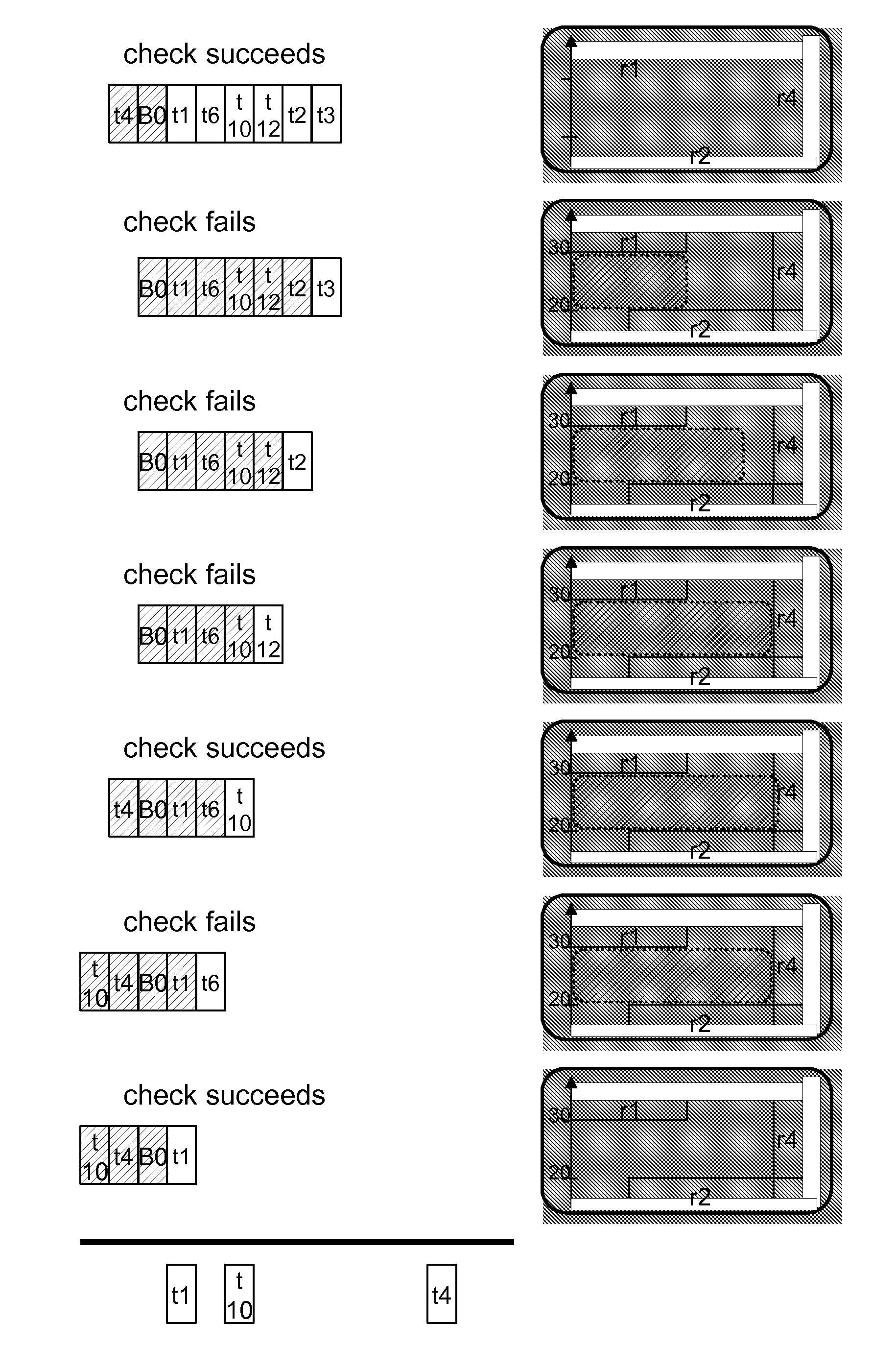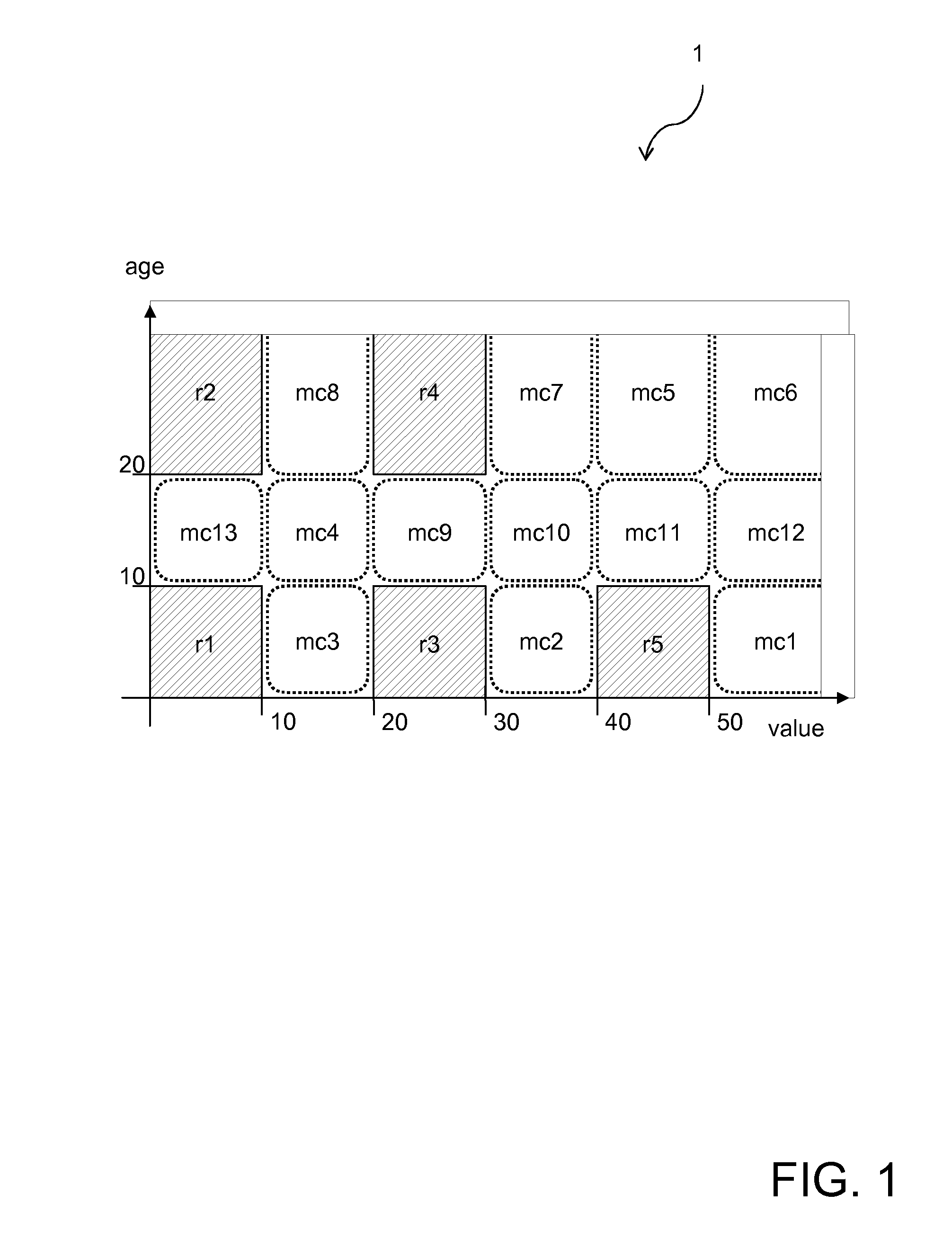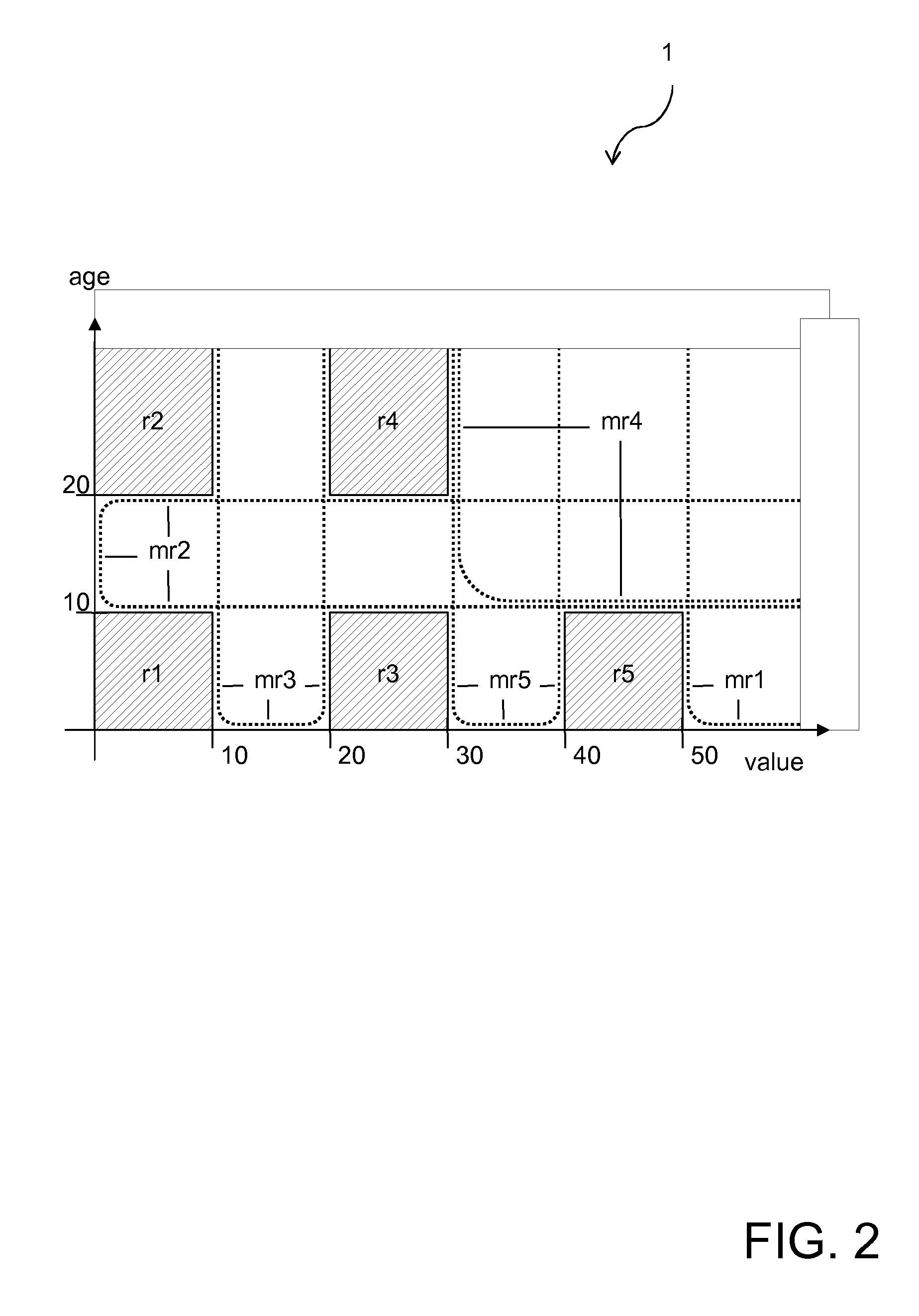Detecting Missing Rules with Most General Conditions
a rule and general condition technology, applied in the field of rule management systems, can solve the problems of difficult to detect the conditions of missing rules, unable to transform the most general form of missing rules, and missing rules arise, so as to reduce the number of tests to be evaluated.
- Summary
- Abstract
- Description
- Claims
- Application Information
AI Technical Summary
Benefits of technology
Problems solved by technology
Method used
Image
Examples
Embodiment Construction
[0049]Referring now to FIG. 1, a first exemplary rule project 1 with one object, which refers to a customer and has two attributes, which are by way of example age and value, can be seen. This is used to describe the general idea of the present invention.
[0050]The rule project 1 comprises a set of five rules r, which are denoted in this exemplary rule project 1 by r1 to r5, since they can be distinguished by their coverage of the objects. The rule project 1 involves single rules r with an arbitrary nesting of disjunctions, conjunctions, and negations. One example of these rules r is given below:[0051]if (the age of the customer is at least 20 and the value of the customer is at most 10) or (the age of the customer is at most 10 and the value of the customer is at least 20 and the value of the customer is at most 30) then set the category of the customer to “Gold”.
[0052]As those complex conditions are difficult to understand and to maintain, it is preferable to split disjunctive cond...
PUM
 Login to View More
Login to View More Abstract
Description
Claims
Application Information
 Login to View More
Login to View More - R&D
- Intellectual Property
- Life Sciences
- Materials
- Tech Scout
- Unparalleled Data Quality
- Higher Quality Content
- 60% Fewer Hallucinations
Browse by: Latest US Patents, China's latest patents, Technical Efficacy Thesaurus, Application Domain, Technology Topic, Popular Technical Reports.
© 2025 PatSnap. All rights reserved.Legal|Privacy policy|Modern Slavery Act Transparency Statement|Sitemap|About US| Contact US: help@patsnap.com



